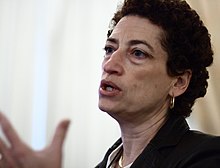 |
In the next few days, the Mauna Loa atmospheric CO2 record will pass 400 ppm. This isn’t the first time that’s happened – we first crossed the 400 ppm threshold in May 2013, but the annual, saw-tooth variation in levels as the Northern hemisphere boreal forest breathes in and out has dipped us below 400 a couple of times since. This crossing is likely to be special however, as it is probably going to be the last time anybody alive today will experience an atmosphere with LESS than 400 ppm CO2.
Human emissions have been pushing up atmospheric levels by about 2.2 ppm every year in recent years, so normally we would expect the annual monthly minimum to increase to beyond 400 ppm from this year’s September minimum of 397.1 ppm, however we are in the midst of one of the largest El Nino years for over a decade, and the drought in the tropics during El Nino years slow the growth of trees relative to normal years, and increases fires. Previous strong El Nino years (like 1997) have helped to push the annual CO2 increase to a massive 3.7 ppm, and this year’s strong El Nino, coupled with increased forest burning in Indonesia, along with fossil fuel burning, have led Ralph Keeling to predict the annual rise could be as much as 4.4 ppm this year.
So why does it matter? 400 is in truth a fairly arbitrary value to get excited about, a neat quirk of our counting system and no more important as a value to the atmosphere than your car odometer ticking from 99,999 to 100,000. It doesn’t mean the car is going to collapse, but it certainly catches your attention. It’s the same with the atmosphere – it gives us pause to consider what we’ve done, and what it might mean for the climate system. For me, the most outrageous thing is that we, an insignificant population of carbon based life forms, have managed to alter the chemical composition of the atmosphere! And not just by a little – by a lot! And let’s not forget that the atmosphere is big – really big!
To me, as an Earth Scientist that leads me to think about when in Earth history the planet has experienced such high levels of CO2 before. Measuring atmospheric CO2 in the geological past is tricky – for the past ~800 thousand years we have a fantastic archive of trapped atmospheric gas bubbles in ice cores, and for the whole of that record CO2 never peaked above 300 ppm. Beyond the time for which we have the ice cores, we rely on geochemical proxies in marine and terrestrial sediments to estimate CO2 and that is the heart of my research. In a paper we published last year we showed that we have to go back to more than 2.3 Million years ago, to the very earliest Pleistocene and Pliocene to find atmospheric CO2 levels as high as we are about to permanently experience. What does that mean? Well the Pliocene was a similar world to today – the continents were in much the same place, the vegetation mix across this Earth was the same, except global temperatures were 2-3 degrees C higher than now, driven primarily by those high levels of CO2.
Another thing that strikes me today is how rapidly we’ve managed to change the atmosphere. In a little over 150 years since we started to burn fossil fuels with alacrity, we’ve gone from 280 ppm to 400 ppm. It’s hard to find geological records with the temporal precision to see changes that quick, but for sure we don’t know any time in Earth history when CO2 has changed so much, so quickly.
With COP21 in Paris just around the corner, perhaps saying goodbye to sub 400 ppm will focus minds to come up with a solution. I don’t know whether it will, or what a global solution would look like, but I hope beyond anything that we don’t do nothing.
—————–
Cabot Institute member Dr Marcus Badger is a Research Associate in the Organic Geochemistry Group in the School of Chemistry. His research involves using biomolecules and climate models to better understand the Earth system.

